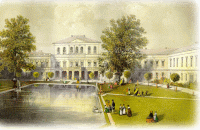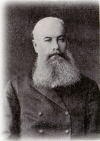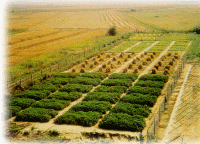 The Polytechnic Institute of Agriculture and Forestry established in Puławy in 1862 was the first agricultural institute in this part of Europe. The home of the Institute was, and still is, the Czartoryski Palace.
The Polytechnic Institute of Agriculture and Forestry established in Puławy in 1862 was the first agricultural institute in this part of Europe. The home of the Institute was, and still is, the Czartoryski Palace.
After the defeat of the uprising in 1863, the Russian authorities ceased the teaching activity of the Institute as a form of repression.
In 1869, the occupying authorities closed down the Puławy Polytechnic Institute and formed the Institute of Rural Husbandry and Forestry, with Russian as the main lecture language. The Institute’s initial role was to be a centre of Russianising the population, but instead it soon became a thriving scientific centre. In the years 1869–1914, around 2,100 Polish and Russian agronomists received their diplomas from the Institute. Among them was Wasyl Dokuczajew whose words were quoted in all the books on soil science. At the outbreak of the First World War, teaching activity of the Institute was suspended.
language. The Institute’s initial role was to be a centre of Russianising the population, but instead it soon became a thriving scientific centre. In the years 1869–1914, around 2,100 Polish and Russian agronomists received their diplomas from the Institute. Among them was Wasyl Dokuczajew whose words were quoted in all the books on soil science. At the outbreak of the First World War, teaching activity of the Institute was suspended.
In 1917, Polish scientists gained permission from the Austrian invading authorities and formed the State  Research Institute of Rural Husbandry (PINGW) as the main centre of agricultural research. In the independent Poland, PINGW became the main centre of agricultural research.
Research Institute of Rural Husbandry (PINGW) as the main centre of agricultural research. In the independent Poland, PINGW became the main centre of agricultural research.
In 1950, PINGW was divided into a few specialised agricultural institutes situated outside Puławy. The Institute of Soil Science and Plant Cultivation (IUNG) was established in the former home, as a state institution subordinate to the Ministry of Agriculture. In 2005, under a government order, IUNG gained the status of the state research institute.
As a part of the statutory activity, the Institute accomplished a new research programme “The sustainable development of crop production and management of agricultural areas in Poland”. As a national research centre, the Institute carried out a long-term programme entitled “The management of the agricultural environment in Poland and the sustainable development of crop production” (2005–2010).
programme “The sustainable development of crop production and management of agricultural areas in Poland”. As a national research centre, the Institute carried out a long-term programme entitled “The management of the agricultural environment in Poland and the sustainable development of crop production” (2005–2010).
In accordance with the statute, the Institute carries out scientic, developmental, introduction and promotion works, including crop production, soil fertility, recognition, and protection of agricultural areas.

